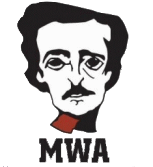What’s the Difference?

THE KISS by Auguste Rodin
The Supreme Court of the United States has determined that people have a First Amendment (Free Speech) right to own pornographic and obscene materials in the privacy of their own home, including sexually-explicit books, magazines, artwork, and movies, as long as there is no commercial interest involved (Nemeth, 2012).
Organizations like the American Civil Liberties Union want to abolish all restrictions on all created materials in the name of Free Speech. For them, any form of free expression — including child pornography — would be exempt from government regulation (Nemeth, 2012).
Obscenity is NOT protected by the U.S. Constitution (Nemeth, 2012). Pornography may or may not fall into the category of obscenity, depending on its content. Although pornographic material is used to arouse sexual excitement, obscene materials go far beyond this need. Images and descriptions of necrophilia, pedophilia, incest, rape, snuff, bestiality, and extreme violence offend the sensibilities of most people; and most people would consider these “obscene.”
Most state and federal statutes are designed to protect children. Laws have been established prohibiting the public display of lewd and obscene materials; restricting the sale of these materials to adults over eighteen years old; regulating the production and sale of such materials; criminalizing exploitation of minors in the production and sale of obscene materials; and denying inmates the right to receive and circulate these materials (Nemeth, 2012).
The Internet has become a hotbed for the distribution of pornographic and obscene materials. Once again, most laws regulating Internet use for this purpose are aimed at protecting children from exposure and exploitation (Nemeth, 2012).
Miller v. California (1973) set the precedent for defining the nature of obscenity (Nemeth, 2012). Whether something can be called obscene is relative to its quality, and this is determined by how a reasonable average person would react to it. The court left it up to the local community to define obscenity and pornography based on community standards (Nemeth, 2012). What is considered obscene in San Francisco will probably differ from what is considered obscene in Salt Lake City. Does the work appeal to prurient interests, provide images or descriptions of sexual behavior that are repugnant, and lack any serious literary, artistic, political, or scientific merit (Siegel, 2012)? These questions are at the heart of Miller v. California.
How do Internet standards apply in this case? If the Internet hosts communities of adult websites that promote lewd, lascivious, pornographic, and obscene materials, what community standards apply (Nemeth, 2012)? It seems like anything goes on the World Wide Web. Even if the Internet was more thoroughly regulated, the Dark Web avoids detection as much as possible, and this is where the truly obscene is mostly found.
History, also, has seen many changes in what is considered pornographic or obscene. Lady Chatterley’s Lover by D.H. Lawrence was considered obscene in early 20th century England (Siegel, 2012). Today, it is viewed as a classic piece of English literature. As Jim Shelley of the UK’s Daily Mail writes, “since it was first published, Lady Chatterley’s Lover has been a byword for illicit, explicit sex and scandal . . . Lawrence’s book has become so synonymous with torrid, florid passions that its once revolutionary frisson has become cliché.” Would Lawrence be shocked by today’s standards of pornography and obscenity? One can only speculate.
Dawn Pisturino
Administration of Justice 109, Mohave Community College, Kingman, Arizona
Copyright 2016 Dawn Pisturino. All Rights Reserved.
References
Nemeth, C.P. (2012). Criminal law. Boca Raton, FL: Taylor & Francis.
Shelley, Jim. (2015, September 7). Lady chatterley’s lover was unfaithful and impotent.
The Daily Mail. Retrieved from http://www.dailymail.co.uk.
Siegel, L.J. (2012). Criminology. Belmont, CA: Wadsworth.









Leave a comment